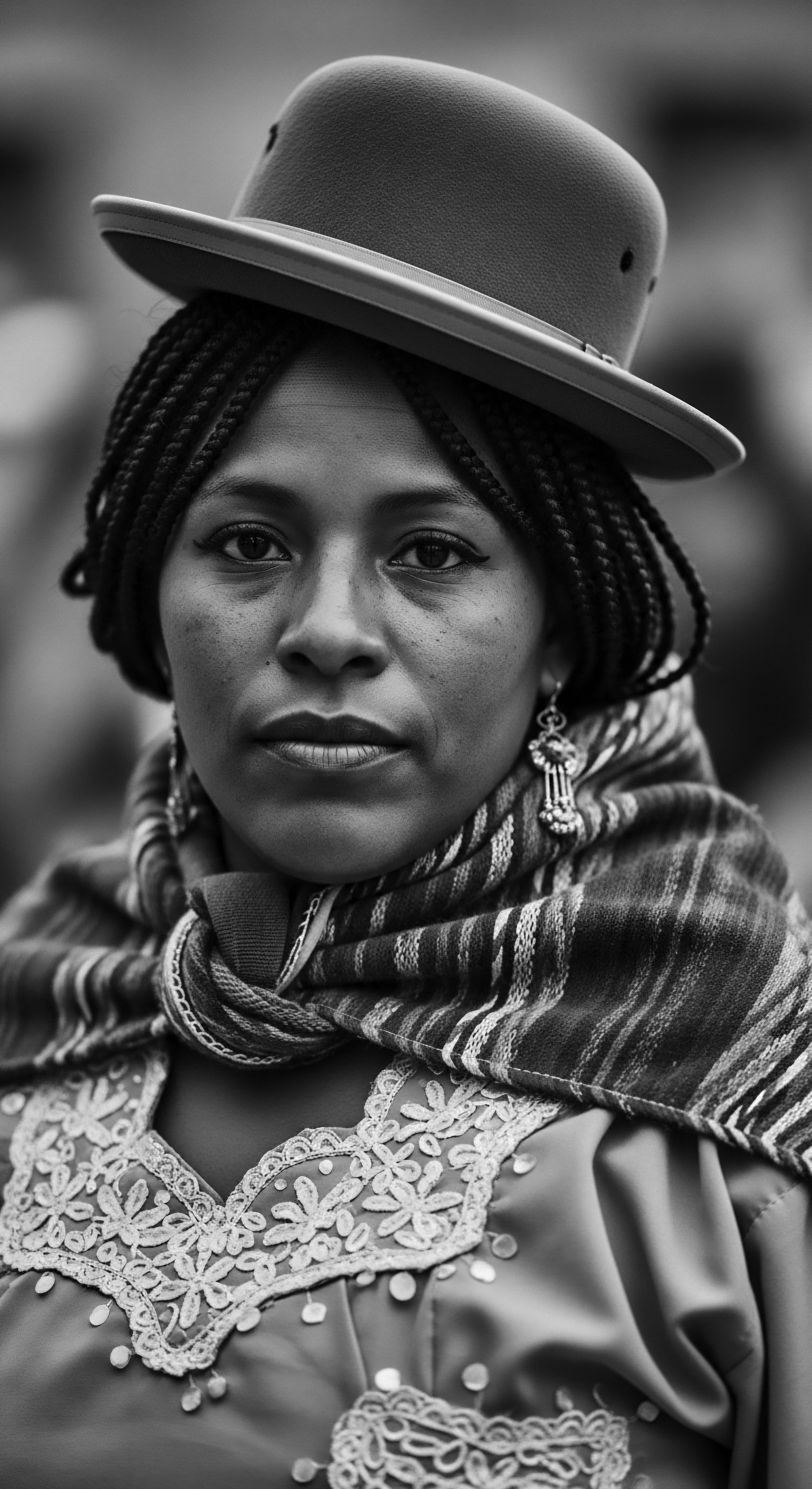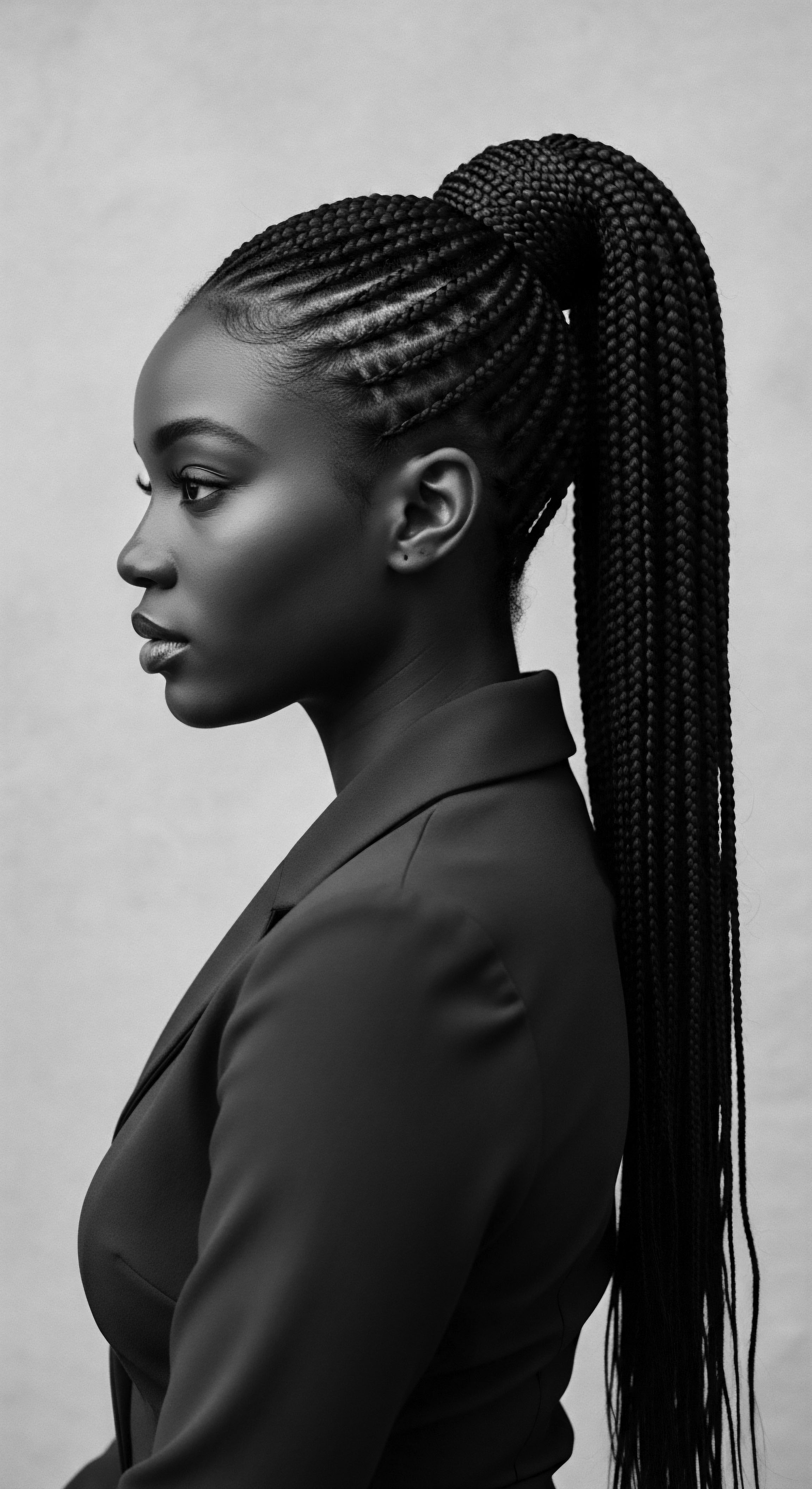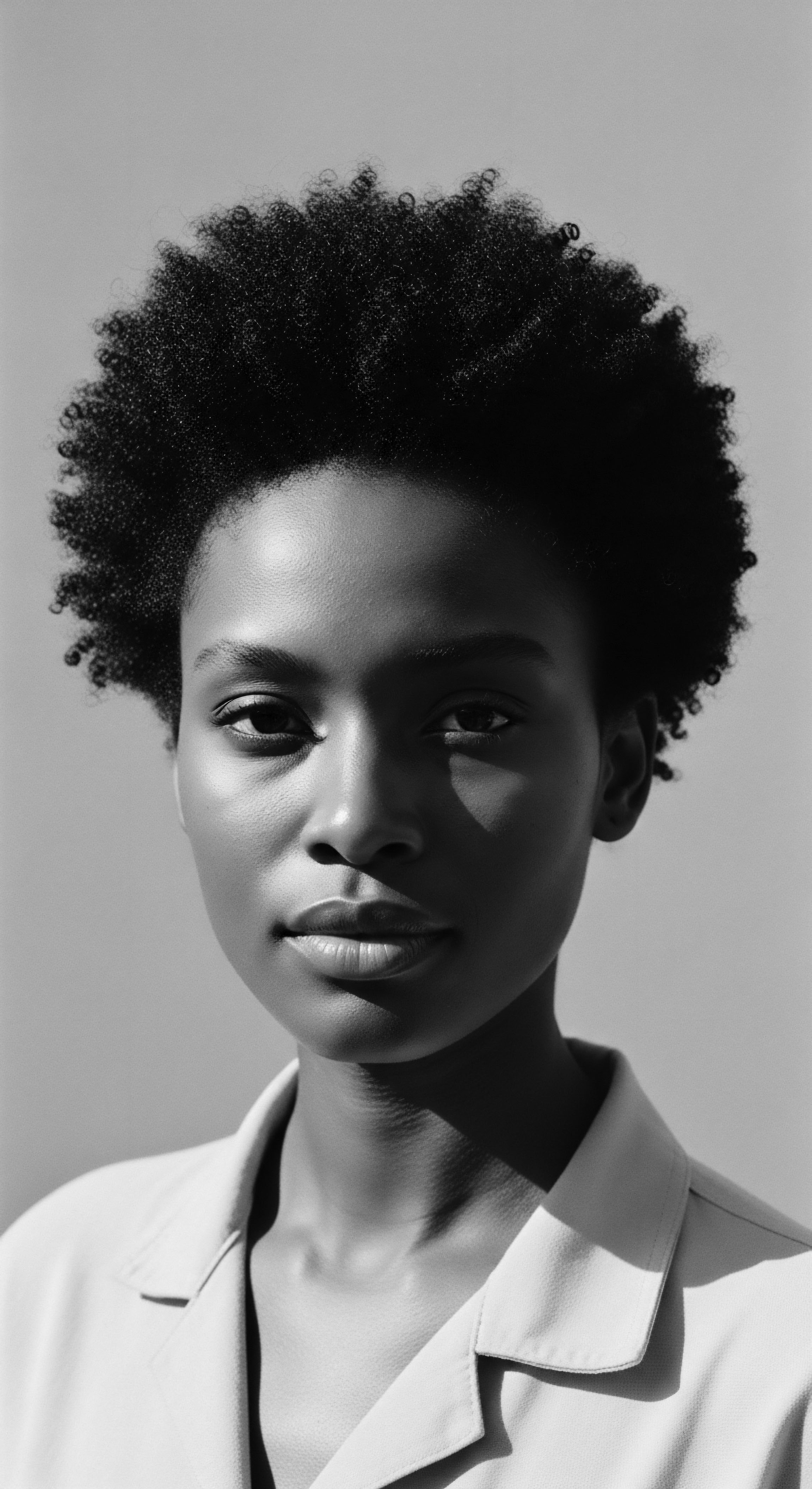The exploration of traditional hair oils in Black heritage is a journey into the very soul of textured hair, a narrative interwoven with resilience, communal care, and self-expression. Roothea understands that this is not merely a subject of cosmetic interest; it is a profound meditation on the enduring wisdom passed through generations. We step into this sacred space with reverence, seeking to illuminate the deep historical and cultural threads that bind these simple oils to the strength and identity of Black and mixed-race communities across time.

Roots
To truly grasp the significance of traditional hair oils in Black heritage, we must first look to the source, tracing the elemental biology of textured hair back through the mists of ancient Africa. Here, under the powerful equatorial sun, hair evolved not just as an adornment, but as a vital protector of the human brain. Scientists propose that tightly coiled hair offered a superior shield against intense solar radiation, minimizing the body’s need to sweat excessively to stay cool, a crucial adaptation in early human development (Jablonski, 2023). This intrinsic protective quality of textured hair established its earliest relationship with its environment, necessitating care practices that honored its inherent strengths.

What are the Ancestral Understandings of Textured Hair’s Structure?
From antiquity, African communities possessed an intuitive understanding of hair’s complex structure, long before modern microscopy. Their knowledge was empirical, derived from centuries of observation and interaction with diverse hair types. This understanding guided the selection of natural ingredients for care, ensuring the hair remained supple, moisturized, and protected from environmental challenges.
Hair was understood as a living extension of the self, deeply connected to one’s spiritual and social standing. The tight coils and springs, known today as Ulotrichous hair, were not viewed as something to be tamed or straightened, but as a natural crown, demanding specific and often laborious care rituals.
The intrinsic protective qualities of textured hair established its earliest relationship with its environment.
The lexicon of hair in ancient African societies was rich, reflecting a detailed awareness of its variations and needs. While modern classification systems (like the Andre Walker Hair Typing System’s ‘type 4’ for kinky hair) offer a scientific framework, traditional communities had their own nuanced descriptors, often tied to tribal identity, social status, or even spiritual beliefs. These distinctions often dictated the type of oils or butters applied, recognizing that different hair densities and coil patterns might require varying levels of emollients or sealants. The wisdom was holistic, seeing the hair, scalp, and overall well-being as interconnected.
For instance, the Bassara/Baggara Arab tribe in Chad traditionally uses Chébé Powder mixed with oils or fats, applied weekly to braided hair, a practice believed to aid length retention by sealing the cuticle and filling hair shaft spaces. This is an ancestral understanding of sealing in moisture, validated by modern science’s recognition of the role of occlusives.

How Did Traditional Oils Support Hair Health in Ancient Times?
In many African regions, where climates ranged from arid to humid, maintaining moisture was an unending challenge for textured hair. The traditional hair oils became indispensable allies in this endeavor. These were not merely cosmetic additions; they were functional agents, providing lubrication, protection, and nourishment. Ancestors learned to extract oils from indigenous plants and animals, recognizing their unique properties.
Shea Butter, derived from the nuts of the shea tree (Vitellaria paradoxa) in the Sahel belt of West Africa, stands as a prime example, revered for centuries for its conditioning and protective qualities. Its use dates back to Queen Cleopatra’s era, with caravans reportedly transporting large clay jars of shea butter for cosmetic and hair care applications. This butter, rich in vitamins A and E, offered UV protection and helped retain moisture, a testament to its enduring efficacy. Another powerful oil is Castor Oil, used by ancient Egyptians for medicinal and cosmetic purposes, promoting hair growth and soothing skin ailments.
The understanding of hair growth cycles, while perhaps not articulated in modern scientific terms, was intrinsically woven into the rhythm of communal life. Hair was seen to grow, to respond to care, and to require rest. Factors like diet, spiritual practices, and environmental conditions were intuitively linked to hair health.
The consistent application of traditional oils, often through communal grooming sessions, supported these cycles, minimizing breakage and promoting length. This preventative care, deeply ingrained in daily and ceremonial life, laid the foundation for the resilient hair heritage we witness today.

Ritual
The transition from a basic understanding of textured hair to the elaborate systems of styling and adornment found throughout Black heritage is where traditional hair oils truly shine, becoming integral to the very fabric of ritual. Hair has never been a passive aspect of identity; it is a vibrant canvas, a historical document, a spiritual conduit. The application of oils transformed from a practical necessity into a tender, often communal, act of care, setting the stage for artistic expression and identity markers. This ritualistic approach speaks volumes about the value placed on hair and the knowledge that flowed through generations.

What Role do Traditional Oils Play in Protective Styling Heritage?
Protective styles, deeply rooted in African ancestry, served multiple purposes ❉ expressing social status, tribal affiliation, marital status, and even conveying hidden messages. Within these intricate styles, traditional oils were indispensable. They prepared the hair for manipulation, reducing friction and breakage during braiding, twisting, or coiling. Post-styling, these oils and butters sealed in moisture, keeping the hair supple and protected for extended periods, especially important when access to daily washing or re-moisturizing was limited.
Consider the Himba women of Namibia, whose distinctive red ochre paste, Otjize, a mixture of butterfat and ochre pigment, protects their hair from the harsh sun and dry climate, simultaneously serving as a cultural marker and a beautifying treatment. This practice, a living testament to ancestral ingenuity, highlights how hair oils are intertwined with aesthetic and practical needs. The meticulous preparation and application of these agents underscore a deep reverence for the strands themselves, recognizing their capacity for both vulnerability and strength. The careful sectioning, the rhythmic application of rich oils, and the deliberate shaping of coils became a meditation, a communal bond, and a silent conversation across generations.
- Shea Butter ❉ Used widely in West Africa for its deep moisturizing and protective qualities, often incorporated into pre-braiding treatments.
- Palm Oil ❉ Historically present in West African culinary and cosmetic uses, providing conditioning and shine to hair.
- Castor Oil ❉ Valued in various African cultures and the diaspora for its ability to promote hair growth and scalp health.
- Moringa Oil ❉ Utilized in ancient Egypt for its lightweight yet nourishing properties, supporting overall hair health.

How do Traditional Tools and Styling Techniques Integrate Hair Oils?
The tools of textured hair care, from ancestral combs carved from wood or fish bones to the hands themselves, worked in concert with traditional oils. The act of detangling with a wide-toothed comb, often crafted with cultural symbolism, became a gentle dance, lubricated by the oil to prevent damage. The shaping of styles, from elaborate braids that could signify a person’s age or religious beliefs to precise coils that indicated wealth, relied on the pliability that oils provided. The historical evidence points to a sophisticated understanding of how these substances interacted with hair at a mechanical level, reducing friction and enhancing definition.
Even during the brutal realities of the transatlantic slave trade, when access to traditional tools and ingredients was severely curtailed, enslaved Africans ingeniously adapted, using substances like bacon grease, butter, or even kerosene as conditioners and sheep fleece carding tools as combs. These desperate adaptations, though heartbreaking, speak to the enduring cultural memory and the critical role of emollients in maintaining textured hair, a practice carried forward as a quiet act of defiance and cultural preservation. The communal aspect of hair styling, often taking hours or even days, created spaces for bonding, storytelling, and the transmission of ancestral wisdom, with oils serving as the tactile medium through which these connections were deepened. This shared experience reinforced community ties and preserved cultural identity, even when facing immense pressure to conform to Eurocentric beauty standards. The oil became a silent witness, absorbing whispered stories, songs, and lessons, a conduit for communal memory.
| Era/Region Ancient Egypt |
| Traditional Hair Oil Practice and Cultural Link Used castor, almond, and moringa oils for nourishment, shine, and hair growth, often linked to rituals of beauty and spiritual purity. |
| Era/Region West Africa (Pre-colonial) |
| Traditional Hair Oil Practice and Cultural Link Shea butter and palm oil were integral to daily grooming and elaborate protective styles, signifying social status and tribal identity. |
| Era/Region African Diaspora (Slavery Era) |
| Traditional Hair Oil Practice and Cultural Link Resourceful use of available fats like butter or bacon grease to maintain hair in protective styles like cornrows, often secretly used to map escape routes. |
| Era/Region Contemporary Black Communities |
| Traditional Hair Oil Practice and Cultural Link Continued use of traditional oils, often blended with modern ingredients, supporting natural hair movements and holistic wellness, serving as a connection to heritage. |
| Era/Region The continuity of hair oil usage, even through forced adaptation, speaks to its vital role in Black hair heritage. |
The transformation of hair through styling, aided by these oils, was not just about appearance; it was a profound act of self-definition. From the regal styles of ancient kingdoms to the resilience displayed during periods of oppression, the choices made concerning hair, and the oils that supported them, became statements of identity. The ability to manipulate and adorn textured hair, a process facilitated by the conditioning properties of oils, allowed individuals and communities to convey meaning, resist erasure, and celebrate their unique heritage. The echoes of these ancestral practices resonate in every modern application of a conditioning oil, a silent acknowledgment of the wisdom that has flowed down generations.

Relay
The journey of traditional hair oils within Black heritage stretches beyond the ancient rituals, relaying their significance through the intricate tapestry of identity and the enduring spirit of self-expression. This continuity, often facing considerable societal pressures, speaks volumes about the deep-seated value placed on hair and the ancestral practices that sustain it. The resilience of textured hair, so often targeted by dominant beauty standards, has found steadfast allies in these time-honored remedies, which bridge elemental biology with profound cultural meaning.

What is the Enduring Cultural Connection of Hair Oils to Identity?
For Black and mixed-race people, hair has never been a mere aesthetic feature; it is a repository of history, a symbol of resistance, and a declaration of identity. Traditional hair oils, whether shea, castor, coconut, or more localized blends, are not simply products; they are touchstones, linking individuals to a collective past. This connection became particularly potent during and after periods of intense oppression, such as the transatlantic slave trade and subsequent eras of systemic racism.
Hair was often shaved or manipulated to strip enslaved people of their identity, yet the tradition of hair care persisted, often in secret, using whatever fats and oils were available. This persistence illustrates a profound commitment to self-preservation and the maintenance of a cultural self against all odds.
Hair is a vibrant canvas, a historical document, a spiritual conduit.
The natural hair movement, gaining prominence from the 1960s onward and experiencing a powerful resurgence in recent decades, underscores this connection. It is a reclamation of ancestral beauty, a rejection of Eurocentric ideals that long deemed textured hair “unprofessional” or “unruly”. Within this movement, traditional oils hold a central position, valued not just for their physical benefits, but for their symbolic power. They represent a return to methods that honor the hair’s natural state, a deliberate act of choosing heritage over imposed standards.
For many, applying these oils becomes a daily affirmation, a quiet ritual that reinforces self-worth and cultural pride. Emma Dabiri, in her work, discusses how African cultural practices related to hair, including hair care during slavery, connect to contemporary politics of Afro styles, affecting how Black individuals perceive their own identities (Dabiri, 2019). This academic exploration highlights the deep psychological and social impact of these historical practices.

How does Modern Science Validate Ancestral Oil Remedies?
The wisdom of ancestral practices concerning hair oils often finds validation in modern scientific understanding. What was once observed through generations of trial and adaptation can now be explained by chemical compositions and structural interactions. For example, shea butter’s effectiveness stems from its high concentration of fatty acids and vitamins, which provide occlusive and emollient properties, helping to seal moisture into the hair shaft and protect it from environmental stressors. Similarly, castor oil, long used for promoting growth, contains ricinoleic acid, which possesses anti-inflammatory and antimicrobial qualities beneficial for scalp health and blood circulation to follicles.
This intersection of ancient wisdom and contemporary science offers a powerful affirmation of Black heritage. It shows that the practices passed down through oral tradition and lived experience were not merely folk remedies but effective, physiologically sound methods of care for textured hair. This understanding strengthens the authoritative voice of Roothea, demonstrating how deep respect for ancestral knowledge can coexist with scientific inquiry, leading to a richer, more comprehensive approach to textured hair care.
The cultural significance extends into communal spaces. Hair salons in Black communities across the diaspora, for instance, often function as cultural hubs, places where traditions are maintained, stories are shared, and knowledge concerning hair care, including the use of traditional oils, is exchanged. This communal aspect reinforces the idea that hair care is a shared experience, a continuous conversation that preserves and adapts heritage for future generations. The act of oiling another person’s hair, whether a parent oiling a child’s scalp or friends sharing styling techniques, becomes a tangible act of love, connection, and cultural transmission.

Reflection
The journey through the cultural landscape of traditional hair oils in Black heritage reveals more than a history of products; it uncovers a testament to resilience, a lexicon of identity, and a profound, ongoing conversation between past and present. Each drop of oil, thoughtfully applied, carries within it the whisper of ancestors, the strength of communal bonds, and the vibrant declaration of self. These practices, born from environmental adaptation and perfected through generations of lived experience, stand as a living archive, embodying the very soul of a strand.
From the primal necessity of protecting the crown under an ancient sun to the intricate styling rituals that spoke volumes about status and spirituality, hair oils have remained steadfast companions to textured hair. They navigated the brutal disruptions of enslavement, transforming into silent acts of resistance, helping to preserve a sense of self when all else was designed to strip it away. Today, they continue to serve as a bridge to ancestral wisdom, offering both tangible benefits for hair health and intangible nourishment for the spirit.
The enduring significance of these oils lies not only in their physical properties but in their symbolic resonance. They are a tangible link to heritage, a reminder that true beauty arises from an understanding and celebration of one’s intrinsic nature. The commitment to ancestral practices in contemporary hair care reflects a powerful assertion of cultural autonomy and a recognition that the wisdom of the past holds vital keys to navigating the present and shaping a future where textured hair is universally revered. Roothea understands that this legacy is not static; it is a dynamic, breathing entity, continuously adapting, yet always rooted in the profound understanding that our hair carries stories, histories, and the luminous spirit of generations gone by.

References
- Byrd, A. & Tharps, L. L. (2001). Hair Story ❉ Untangling the Roots of Black Hair in America. St. Martin’s Press.
- Dabiri, E. (2019). Twisted ❉ The Tangled History of Black Hair Culture. Harper Perennial.
- Johnson, J. A. & Bankhead, T. (2014). Black Women and Identity ❉ What’s Hair Got to Do with It? University of Michigan.
- Kedi, C. (2011). Beautifying the Body in Ancient Africa and Today. Books of Africa.
- Jablonski, N. G. (2023). Curly hair kept early humans cool. Penn State University.
- Rosado, S. D. (2003). No Nubian Knots or Nappy Locks ❉ Discussing the Politics of Hair Among Women of African Decent in the Diaspora. A Report on Research.
